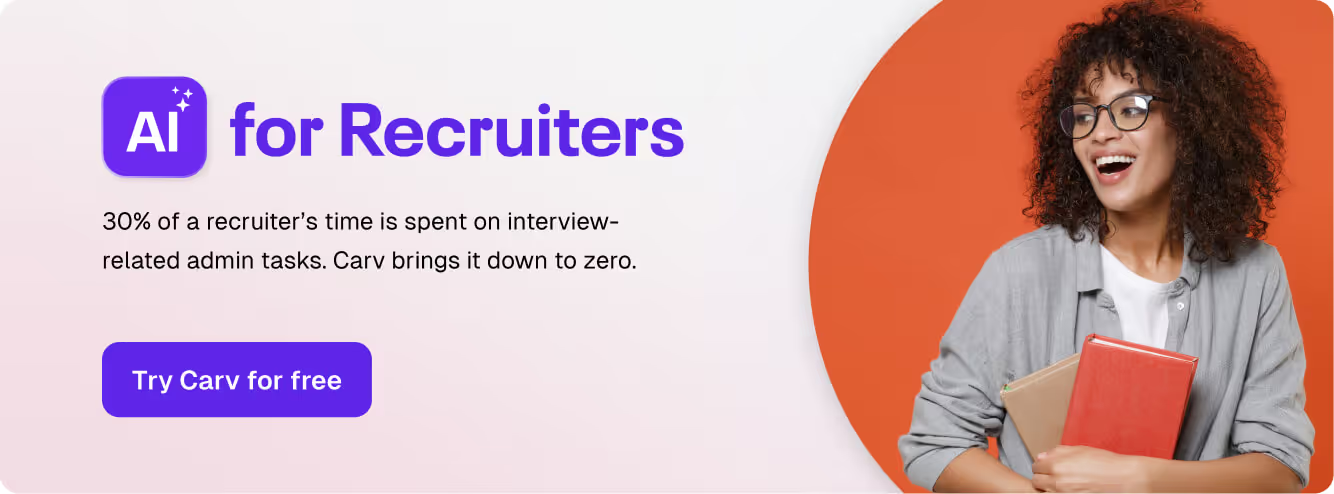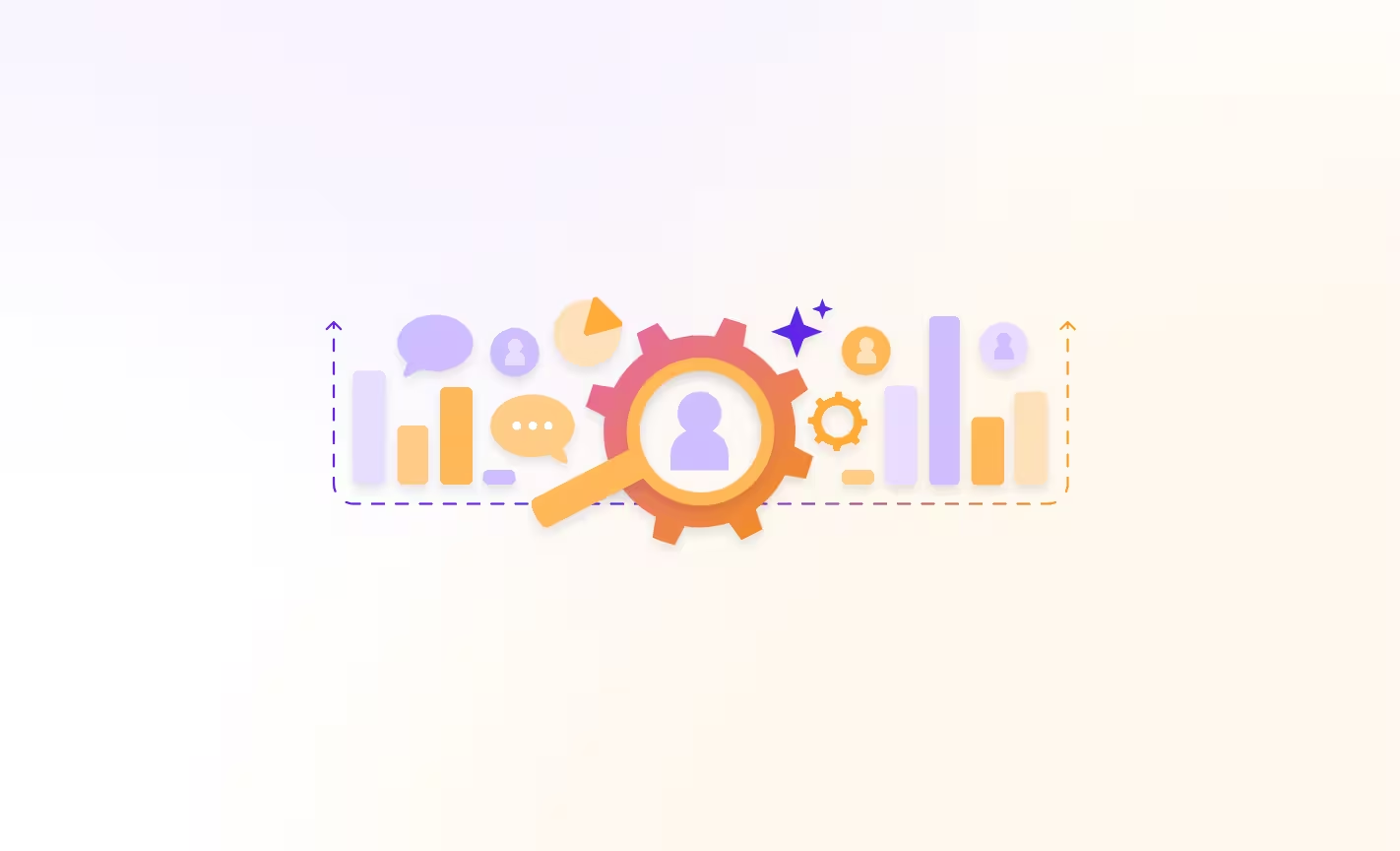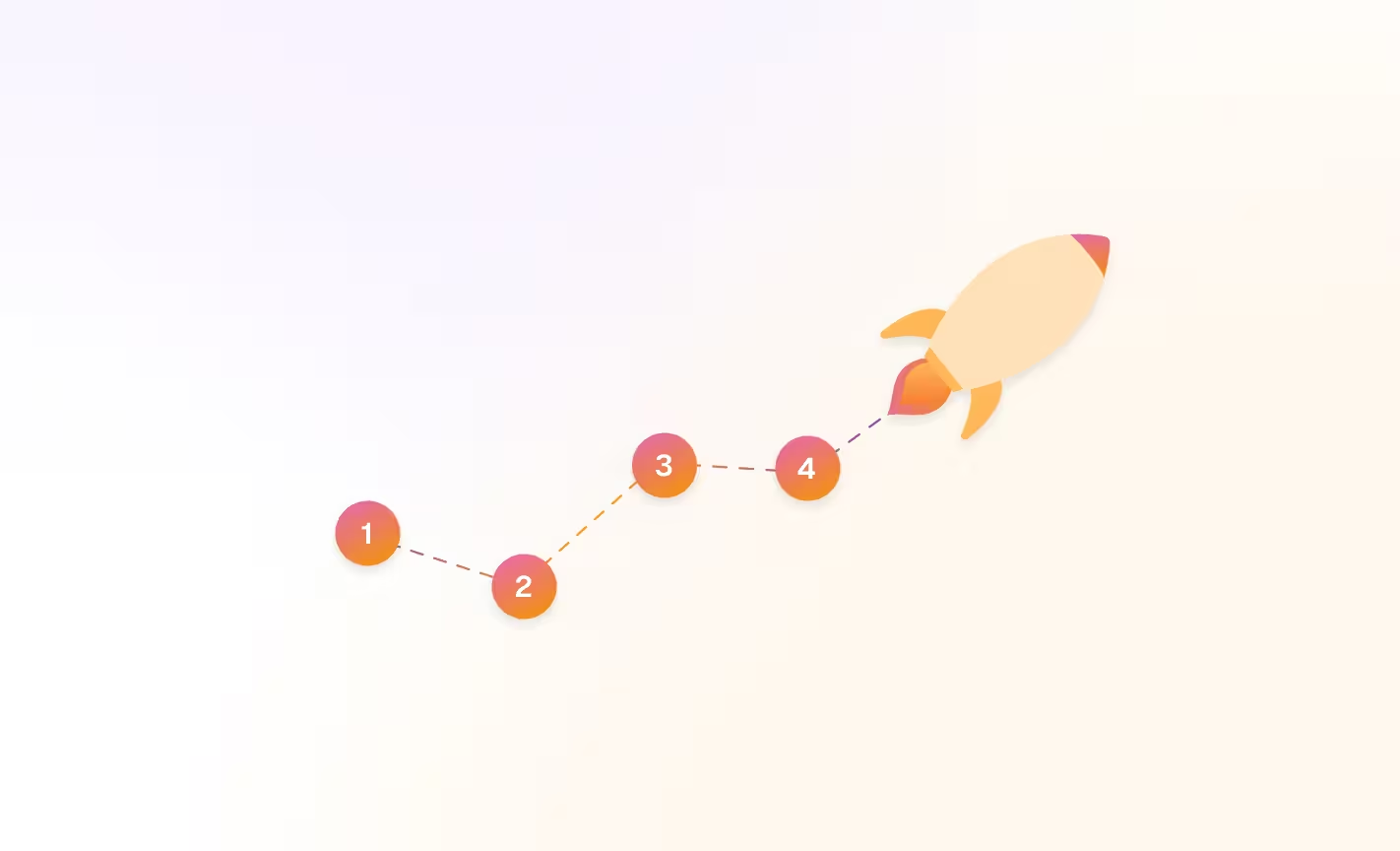Let's face it: writing compelling job descriptions that attract the right talent can be a time-consuming struggle. To speed things up, you might be tempted to rely on online generators.
But if you're using AI for job descriptions, do it right.
It's the biggest trend in recruitment right now - 30% of companies use AI for job descriptions, followed by automated candidate comms (25%).

At first glance, AI job description generators appear as convenient solutions, as they get the job done in seconds.
But let's be honest – the output is often generic, "templated" descriptions that fail to capture the essence of the role.
This is where recruitment AI steps in. Unlike basic generators, purpose-built recruitment AI goes beyond templates. It uses your intake calls as input source and customizes the job descriptions to fit the hiring manager's needs, the role, and the ideal candidate's personality.
This targeted approach not only enhances job description quality but also makes the recruitment process smoother by reducing manual work and ensuring job postings align closely with hiring goals.
Let's compare job description generators and recruitment AI solutions to help you make a more informed choice.

AI job description generators: Pros and cons
Before we dive in, please note that’s we’re only looking at AI job description generators and not discussing out-of-the-box job description templates here. So maybe it’s good to start with a definition, to be on the same page.
An AI job description generator is a standalone tool that uses generative artificial intelligence to automatically generate job descriptions based on input criteria such as job title, responsibilities, qualifications, and desired skills.
Depending on the tool you choose, there might be some room for customization, but in general, the functionality is limited.
How job description generators work
AI job description generators analyze input data and use pre-programmed templates and language models for writing job descriptions.
Here's how they typically operate:
- Input criteria: Users input specific details about the job role, including job title, responsibilities, required qualifications, and preferred skills.
- Algorithm analysis: The AI algorithm processes the input data and identifies relevant keywords and phrases to incorporate into the job description.
- Content generation: Based on the analyzed data, the generator automatically generates a detailed job description that aligns with the provided criteria.
So now let’s look at the pros and cons of these job description tools.
What AI job description generators do well
AI job description generators offer some advantages:
- Time-saving: These generators can swiftly create job descriptions, significantly reducing the time and effort required for manual writing.
- Consistency: They ensure consistency in language and format across all job descriptions, maintaining a professional and cohesive image for the organization. This can be an advantage if you’re an in-house recruiter, but can represent a major drawback for agency recruiters and consultants or recruitment service providers.
- Efficiency: By automating the process, AI job description generators streamline recruitment workflows, allowing recruiters to focus on other critical tasks.
- Language optimization: Many generators use algorithms to optimize language for better search engine visibility, increasing the chances of attracting qualified candidates.
- Scalability: AI job description generators are scalable, capable of generating numerous job descriptions efficiently, making them potential options for organizations with high-volume hiring needs.
Overall, generative AI job description generators support recruiters in expediting the creation of job descriptions.
They can potentially be used by in-house recruiters for high-volume roles.
Limitations of generic job description generators
Despite their benefits, generic job description generators also have limitations:
- Lack of customization: Generic generators may not adequately tailor job requirements to the specific needs of the role or company culture, leading to generic and uninspiring descriptions.
- Limited flexibility: These generators often follow rigid templates, restricting the ability to adapt descriptions to unique circumstances or changing hiring requirements.
- Inadequate understanding: AI generators may struggle to grasp nuanced job roles or industry-specific terminology, resulting in inaccuracies or inappropriate language in job descriptions.
- Overreliance on algorithms: Some generators overly rely on algorithms, neglecting the human touch needed to craft compelling and engaging job descriptions.
- Lack of originality: Due to their standardized approach, generic generators may produce job descriptions that lack originality and fail to stand out to potential candidates. In other words, they generate “AI writing”, which is easy to spot. Not exactly ideal when you’re dealing with a tight job market or passive candidates who have become completely numb to mass outreach.
- Language barrier: Generators may face challenges in accurately interpreting input data or translating requirements into coherent, high-quality job descriptions, especially in multilingual contexts.
- Risk of mistakes: Given that most AI generators use only the job title and company name as input fields, they can easily mistake your company for a different one. In this case, the description will talk about a completely different reality and you’ll have to start from scratch.
In summary, while generic job description generators offer efficiency and convenience, they may fall short in delivering tailored, engaging, and culturally relevant job descriptions that stand out on job boards and help you attract the best candidates.
So now that you’re aware of these limitations, let’s see how recruitment AI is different and why we believe it’s a better choice for non-volume roles.
Recruitment AI: Pros and cons
Unlike generic, free job description generators, purpose-built recruitment AI solutions take the input from your intake calls, company descriptions, tone of voice documents and past job descriptions, creating much more accurate job requirements for specific vacancies and clients.
This means fewer revisions and more time saved for recruiters.
How recruitment AI solutions work
Purpose-built recruitment software that uses generative AI to create job descriptions takes advantage of gen AI’s ability to work with unstructured data.
Here's how they typically operate:
- Input criteria: Depending on the tool, this might slightly vary, but tools like Carv for example use intake calls, company descriptions and previous job requirement documents to create job descriptions that fit a specific role or - in case of agency recruiters - the needs of a specific client.
- Unstructured data interpretation: The artificial intelligence technology in purpose-built recruitment solutions takes the unstructured data from the input sources and interprets it to generate output that’s accurate and personalized.
- Content generation: Based on the analyzed data, the recruitment AI generates an almost-perfect job description that aligns with the open role, company, and hiring manager’s needs.
So now let’s look at the pros and cons of purpose-built AI for recruiters.

What purpose-built AI recruitment tools do well
Purpose-built AI recruitment tools offer a range of advantages that streamline the hiring process and enhance recruiter efficiency.
- Accurate job requirements: Purpose-built AI tools excel in creating accurate job requirements tailored to specific vacancies or clients, reducing the need for extensive revisions. Although the output is still AI content, the AI assistant uses actual intake calls and company data, creating content that’s ready to use.
- Time-saving: These tools save recruiters time by automating the process of creating personalized job descriptions, allowing them to focus on other essential tasks.
- Contextually enriched content: By analyzing input data comprehensively, purpose-built AI tools ensure that job descriptions are personalized to fit the tone, style, and specific needs of each client or role.
- Multiple use cases: While AI job description generators focus only on this step of the process, AI recruitment tools support a wider variety of use cases. The AI assistants can help recruiters generate interview questions, candidate profiles and motivation letters in seconds, and can even support with content creation for recruitment marketing initiatives.
- Original content: Unlike generic solutions, purpose-built recruitment AI can personalize the content to help you stand out on platforms like LinkedIn, where there’s a lot of spam, and to help you reach the right candidates.
Of course, this all sounds great, but there are some limitations as well.

Limitations of recruitment AI solutions
While purpose-built AI recruitment tools offer numerous benefits, it's essential to acknowledge their limitations to make informed decisions about their implementation.
- Interpretation challenges: Despite their capabilities, recruitment AI solutions may encounter challenges in accurately interpreting unstructured data, leading to inaccuracies. This is more likely to happen when the speaker - recruiter or hiring manager - has an accent.
- Over-reliance on input data: The effectiveness of AI recruitment software heavily relies on the quality and comprehensiveness of the input data, which can sometimes be limited or outdated.
- Customization constraints: While purpose-built AI tools offer customization options, they may still have limitations in fully accommodating highly unique or specialized job roles.
In conclusion, purpose-built recruitment AI offers a valuable tool for recruiters, enhancing efficiency, accuracy, and reducing bias.
However, it’s important to remember that AI should be used as an assistant to enhance HR professionals, not a replacement for human expertise and judgment.
Choosing the right tool for generating job descriptions
Now that you understand the strengths and weaknesses of both AI job description generators and recruitment AI, it's time to decide which is best for your needs. Here are some key factors to consider.
Accuracy:
- Job description generators: Lose. They often rely on generic templates and lack the ability to understand the nuances of specific roles, leading to inaccuracies and a lack of fit with your company culture.
- Recruitment AI: Win. By leveraging your specific data (intake calls, company descriptions, etc.), recruitment AI creates descriptions that are highly accurate and tailored to the position and your organization.
Customization:
- Job description generators: Lose. They offer limited customization options, resulting in generic descriptions that don't stand out.
- Recruitment AI: Win. Recruitment AI allows for a high degree of customization, enabling you to create descriptions that reflect your company's unique voice and the specific needs of the role.
Integration into recruitment tech stack:
- Job description generators: Lose. Most are standalone tools that don't integrate with existing recruitment software.
- Recruitment AI: Win. Purpose-built recruitment AI solutions are often designed to integrate with your existing Applicant Tracking System and other recruitment tools, streamlining your recruitment process.
Costs:
- Job description generators: Varied. Some are free, while others have paid subscriptions with different features.
- Recruitment AI: Generally more expensive than basic generators, but often come with a free plan. However, the increased efficiency, accuracy, and customization can lead to a significant return on investment (ROI).
In conclusion, while AI job description generators offer a quick and easy solution, they often sacrifice quality and personalization.
For recruiters seeking to attract top talent, recruitment AI is the superior choice. It provides a valuable time-saving tool while ensuring your job descriptions are accurate, engaging, and reflect your company's unique culture.
Over to you
Both AI job description generators and recruitment AI solutions offer valuable tools for recruiters, but they cater to different needs.
- If your primary goal is speed and efficiency, and you need basic job descriptions for high-volume roles, a free or paid AI job description generator might be enough.
- For recruiters seeking a more comprehensive solution that prioritizes accuracy, personalization, and time-saving features, recruitment AI is the better choice.
Ultimately, the best tool for you depends on your specific recruitment goals and budget.
If you’re curious to see the difference, we invite you to give Carv a try. Carv’s AI is purpose-built for recruiters and suitable for in-house recruiters, agencies, and recruitment service providers alike.



%20(1).avif)




